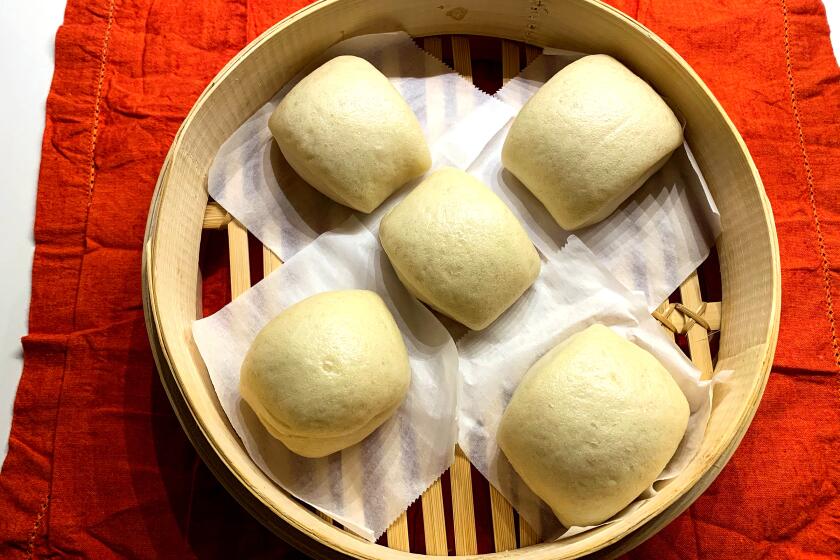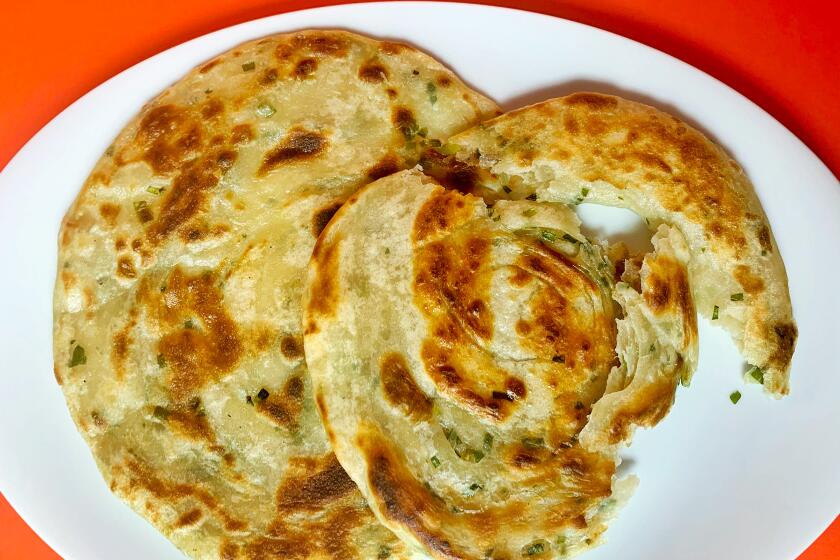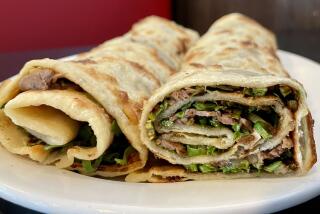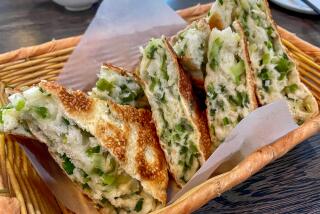No yeast? You don’t need any for these savory scallion pancakes
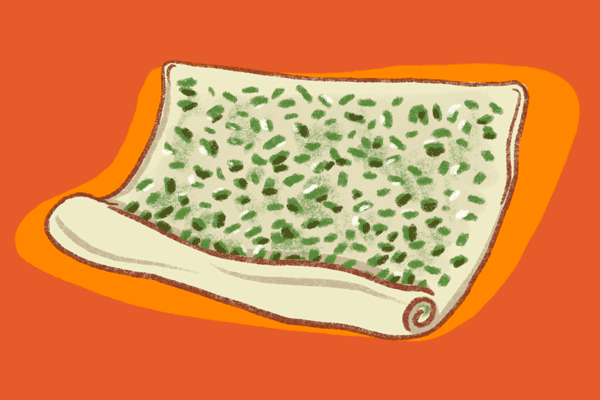
- Share via
With so many of you having to stay home and cook for the first time — ever or more than you have in a long time — we get that it can be overwhelming to have to cook all your meals from scratch. So we’re here to get you started. Each day we’re going to post a new skill here and go into detail about how to do it — a resource for cooking basics so you can get food on the table and get through this.
A series of simple tutorials for making some basic recipes at home.
Lesson 32: Scallion Pancakes
Every Saturday morning of my childhood, I had to go to Chinese school, a special form of first-generation-American kid misery. Instead of sleeping in or watching cartoons, I woke up early and got yelled at for not being able to recite lessons. The only bright spot was knowing that enduring class meant finally getting to return home to eat cong you bing — “scallion pancakes” was the one Chinese phrase I could say flawlessly.
My parents bought those scallion pancakes from Yi Mei Pastries, a Monterey Park family-run shop now called Huge Tree Pastry (and still open for takeout), where they rolled them extra flat and fried them extra crisp. As the Chinese restaurant scene expanded in the San Gabriel Valley, so did scallion pancake options.
Much like French fries, scallion pancakes come in endless styles but all taste pretty great because they’re salty and good oily (not bad greasy). Unlike fries, they’re worth making at home. The yeastless dough comes together easily and the rolling process feels more like playing than cooking.
This simple bread recipe for mantou, Chinese buns, steams the dough on the stovetop to make it extra tender and moist. The dough can be baked as well.
Scallion pancake dough falls into two categories: those made with hot water and those with cold. When flour is kneaded with cold water, its proteins become stretchy and elastic and form the gluten that gives bread chewiness. When boiling water hits flour, it denatures those proteins. Even though some gluten still forms, the resulting dough ends up very tender.
I tested both versions and found cold water pancakes too chewy and hot water ones too soft. To achieve the just-right in-between, I start by stirring in hot water, then adding half the amount of cold water. After kneading the sticky mass into a soft, tacky ball, the dough rests so that it can more fully absorb all the water. The gluten that has been developed relaxes, which makes rolling easier.
After countless attempts to create an ideal scallion pancake by lightly flouring the dough, I found the trick is to oil it instead. Cong you bing translates to scallion oil pancake. The oil doesn’t just coat the outside while cooking, it also permeates the inside. It’s not much — not nearly as much as the butter between croissant layers — but it’s enough to make the pancakes flaky.
Scallions, of course, count for much of the flavor. Very finely chopped green tops are spread over the dough with a generous sprinkle of salt. The pieces need to be finely minced to avoid poking through the dough and tearing it. Instead of running my knife over and over them again, which yields a slimy mess, I split the pieces lengthwise and then finely chop crosswise.
Now, for the fun part: The scallion-flecked dough gets rolled up like a sleeping bag. With each rotation, give the tender dough a little nip and tuck to ensure a tight, even cylinder. To multiply the layers in each pancake, the snake is coiled. It now has to rest again to keep those layers from gluing together while cooking and to ease rolling.
When it’s time to cook, it’s also time to make a few decisions. The pancakes can be rolled thicker or thinner, and they can be shallow-fried in hot oil for a crackly shell and softer inside or flipped over lower heat in a dry pan for a crisp outside and chewier layers. They’re delicious every way and taste like a reward for waiting through a place you don’t want to be.
Crunchy, salty and packed with scallions, these fun-to-make pancakes are irresistible.
More to Read
Eat your way across L.A.
Get our weekly Tasting Notes newsletter for reviews, news and more.
You may occasionally receive promotional content from the Los Angeles Times.

